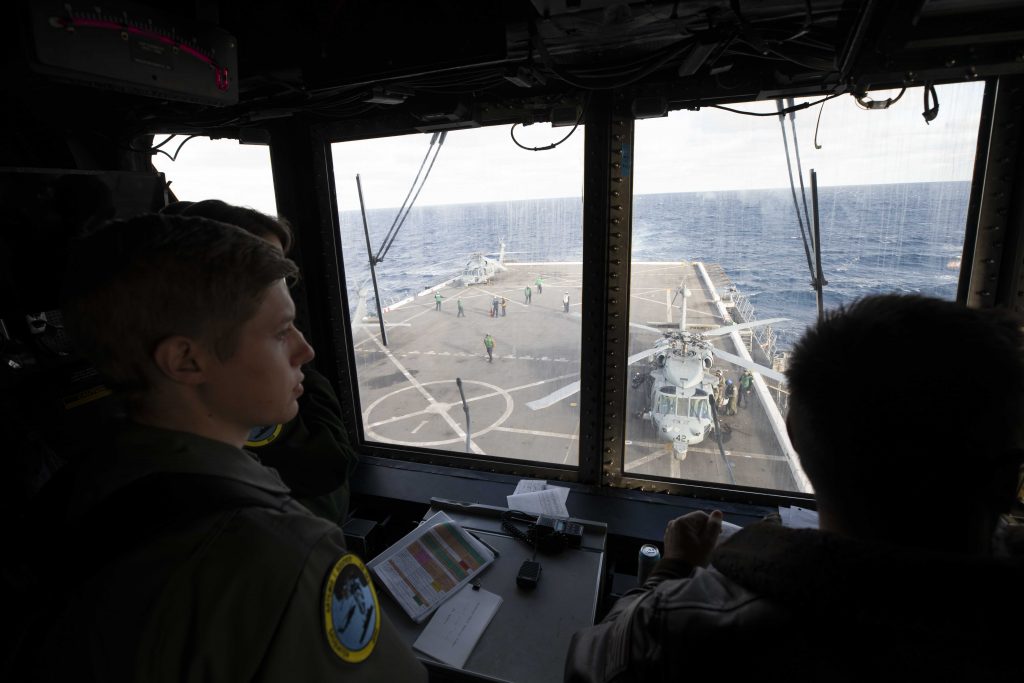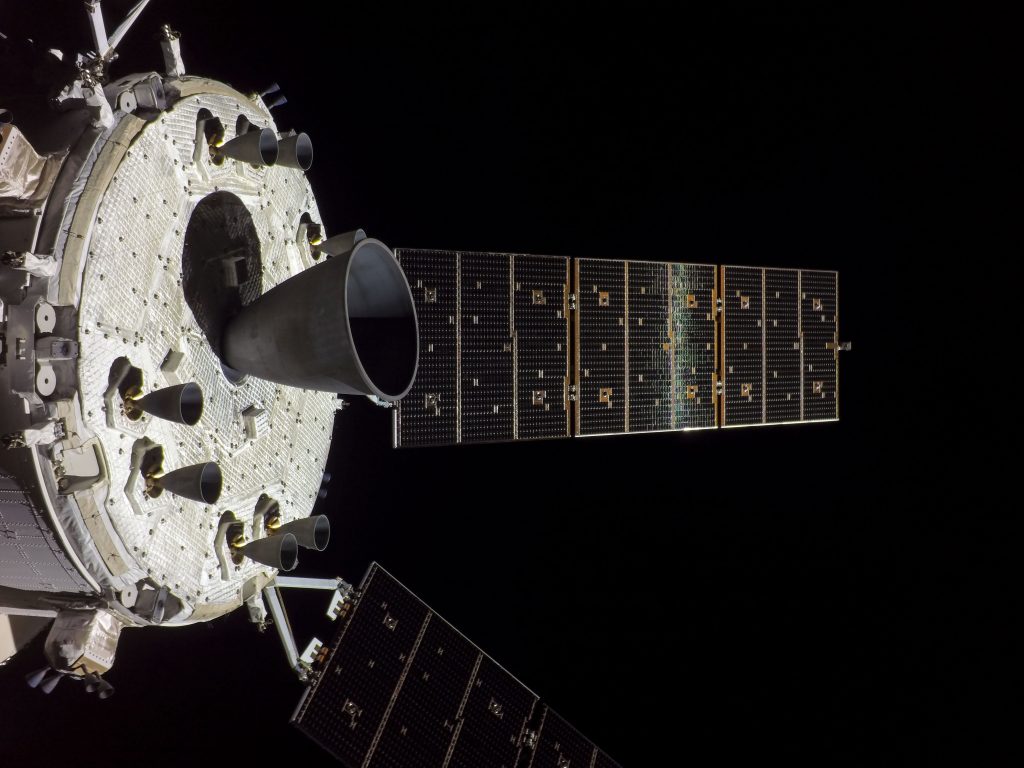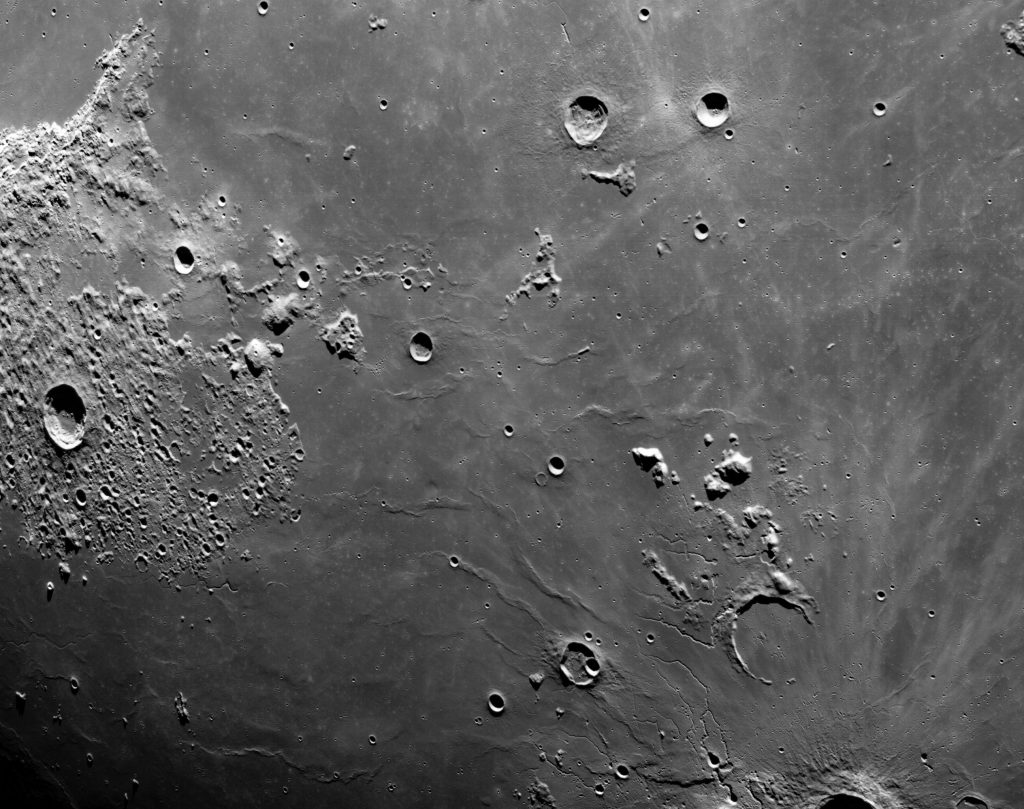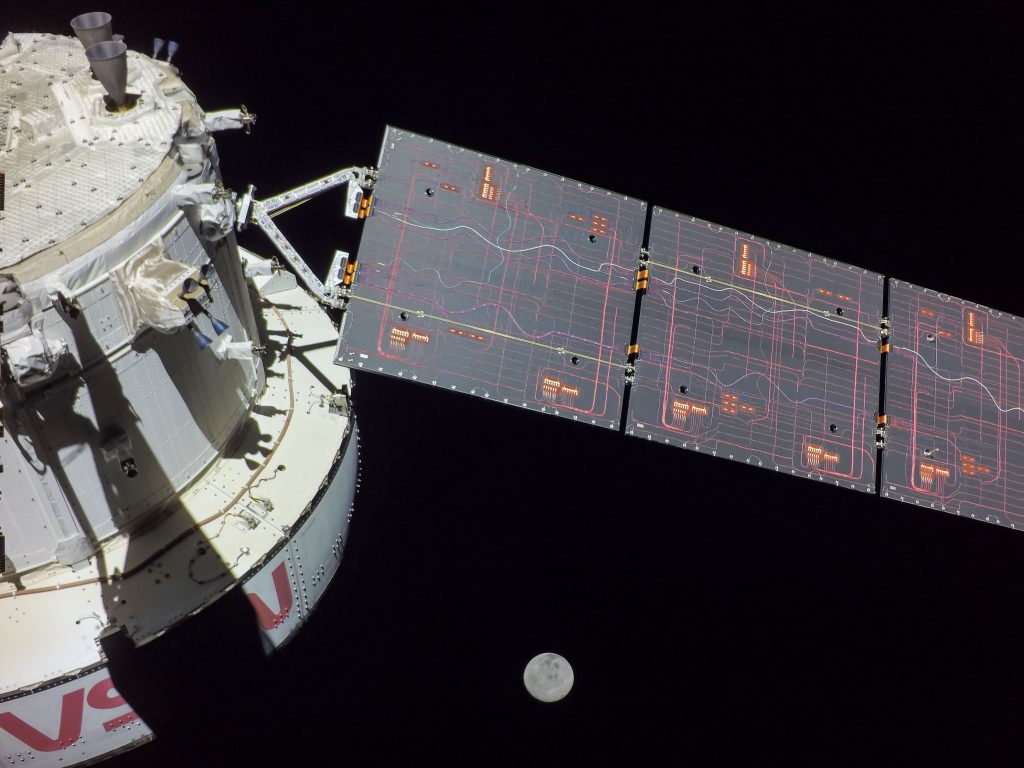The crew module of NASA’s Orion spacecraft has successfully separated from its service module at 11:00 a.m. CST in preparation for the crew module’s return to Earth. The service module will burn up harmlessly in Earth’s atmosphere upon re-entry over the Pacific Ocean. The Artemis I trajectory is designed to ensure any remaining parts do not pose a hazard to land, people, or shipping lanes.
Next, the crew module will perform a skip entry technique, dipping into the upper part of Earth’s atmosphere and using that atmosphere, along with the lift of the capsule, to skip back out of the atmosphere, then reenter for final descent under parachutes and splash down. This technique enables the spacecraft to accurately and consistently splash down at the selected landing site for Artemis missions regardless of when and where they return from the Moon. During re-entry, the enormous heat generated as Orion encounters the atmosphere turns the air surrounding the capsule into plasma, which will briefly disrupt communications with the spacecraft.
Below are the upcoming re-entry milestones in CST:
11:20:14 p.m. – Crew Module Entry Interface
11:35:28 p.m. – Altitude 40,000 feet
11:36:02 p.m. – Forward Bay Cover Chute Deploy
11:36:06 p.m. – Drogue Chute Deploy
11:37:26 p.m. – Main Chute Deploy
11:39:41 p.m. – Splashdown
Earth’s atmosphere initially will slow the spacecraft to 325 mph, then the parachutes will slow Orion to a safe splashdown speed of 20 mph or less as it descends through Earth’s atmosphere. Parachute deployment begins at an altitude of about five miles with three small parachutes pulling the forward bay covers away. Once the forward bay cover separates, two drogue parachutes will slow and stabilize the crew module for main parachute deployment. At an altitude of 9,500 feet and a spacecraft speed of 130 mph, three pilot parachutes will lift and deploy the main parachutes to slow Orion to a landing speed that ensures astronaut safety for crewed missions.
When Orion splashes down, the crew module uprighting system, also known as CMUS, deploys a series of five bright-orange helium-filled bags on the top of the capsule to upright the capsule in the event it stabilizes upside down. The system will deploy regardless of the landing position of the capsule, and it takes less than four minutes to upright the capsule if needed. The capsule must be upright for crew module communication systems to operate correctly and to help protect the health of the crew members inside on future missions.










